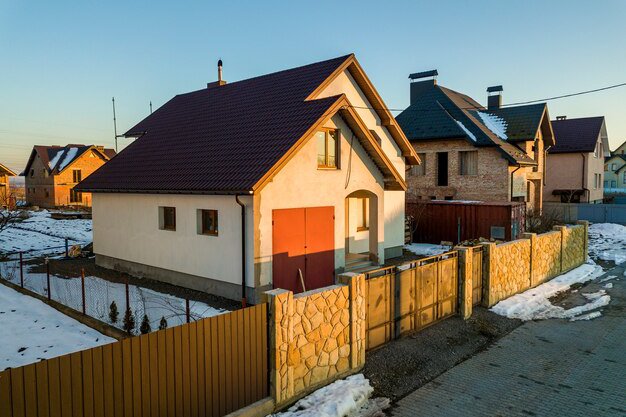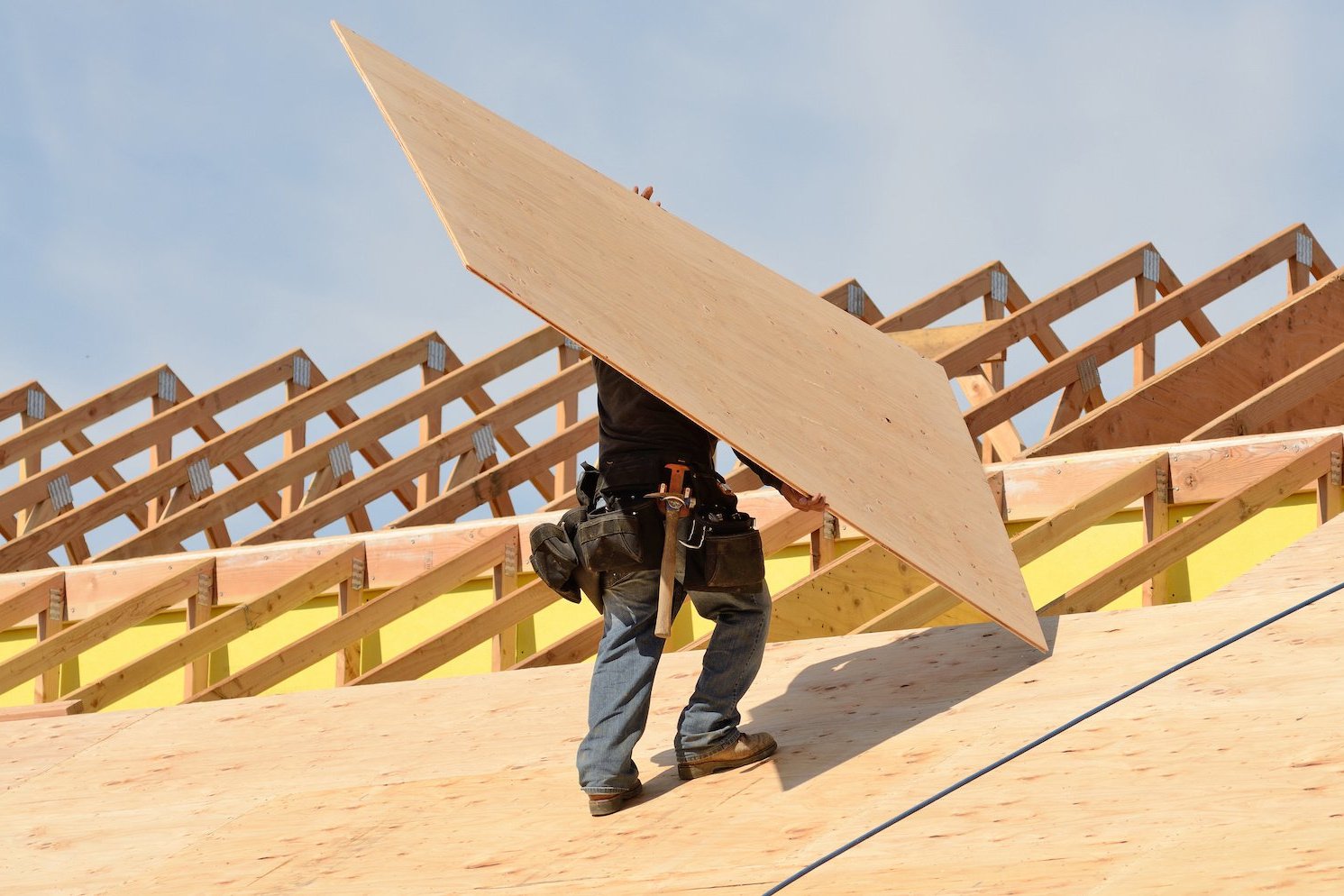Benefits of Installing Gutter Guards in Warren, Oregon
Gutters are a critical component of any home, serving the vital function of channeling rainwater away from the roof, walls, and foundation. Without properly functioning gutters, water can pool around the base of the house, seep into the basement, erode landscaping, and cause significant damage to the structure itself. However, gutters are susceptible to clogging, especially in areas with abundant trees like Warren, Oregon, USA. Leaves, twigs, seeds, pine needles, and other debris can quickly accumulate, turning your efficient water management system into a source of potential problems. This is where gutter guards come into play, offering a proactive solution to keep debris out and water flowing freely.
Investing in gutter guards is not merely an upgrade; for many homeowners, it's a necessary layer of protection that safeguards their property from the ground up. They are designed to cover the open top of the gutter, allowing water to enter while blocking solid debris. The specific design and material of the guard determine its effectiveness against different types of debris and its durability. By preventing clogs before they happen, gutter guards significantly reduce the risks associated with overflowing gutters and minimize the burdensome task of frequent cleaning. Understanding the full scope of these benefits can help homeowners make informed decisions about protecting their investment.
Understanding the Problem: The Risks of Clogged Gutters
Before diving into the benefits of gutter guards, it's essential to fully grasp the problems they are designed to solve. Clogged gutters are more than just a nuisance; they pose serious threats to a home's integrity and longevity. When gutters are blocked, rainwater has nowhere to go but over the sides. This uncontrolled water flow can cause a cascade of issues, each potentially leading to expensive repairs.
One immediate risk is damage to the fascia and soffits. These components, located directly beneath the roofline, are often made of wood. Constant exposure to overflowing water can lead to rot, mold growth, and deterioration. This damage compromises the structural support of the eaves and can attract pests like insects and rodents seeking damp, decaying wood.
Water overflowing from gutters also saturates the ground directly around the foundation. Over time, this can lead to hydrostatic pressure building against basement walls, potentially causing cracks, leaks, and even structural failure. In basements or crawl spaces, excess moisture creates an environment ripe for mold and mildew growth, impacting indoor air quality and potentially causing health issues.
Landscaping around the house can also suffer. Overflowing water can wash away mulch, erode soil, and damage plants. Patios, walkways, and driveways near the foundation may also experience cracking or settling due to saturated and unstable soil conditions.
Furthermore, in regions that experience freezing temperatures, clogged gutters can contribute to the formation of ice dams. An ice dam forms when heat escaping from the house melts snow on the roof. This melted water flows down to the colder eaves, where it refreezes, especially if blocked by debris in the gutter. As this ice builds up, it can force water back up under the shingles, leading to leaks inside the house, damaging ceilings, walls, and insulation.
The task of cleaning clogged gutters is also risky. It requires climbing ladders, often to significant heights, and dealing with slippery, debris-filled troughs. This is a task that many homeowners find unpleasant, dangerous, and time-consuming.
What Are Gutter Guards?
Gutter guards, also known as leaf guards or gutter protection systems, are physical barriers installed over the top of rain gutters. Their primary function is to prevent leaves, twigs, pine needles, seed pods, shingle granules, and other solid debris from entering and accumulating in the gutter channel, while still allowing rainwater to flow freely into the gutter and down the downspouts.
The concept is simple: create a filter or barrier that separates water from debris. However, the effectiveness of a gutter guard system depends heavily on its design, the type of debris prevalent in the area, and proper installation. Different types of guards utilize various methods – some have small holes or mesh that water passes through, while others use surface tension principles to guide water into the gutter while debris falls off.
Installing gutter guards transforms your open gutter system into a more enclosed, protected channel. This reduces the frequency of clogs and minimizes the need for manual cleaning, addressing many of the risks outlined above.
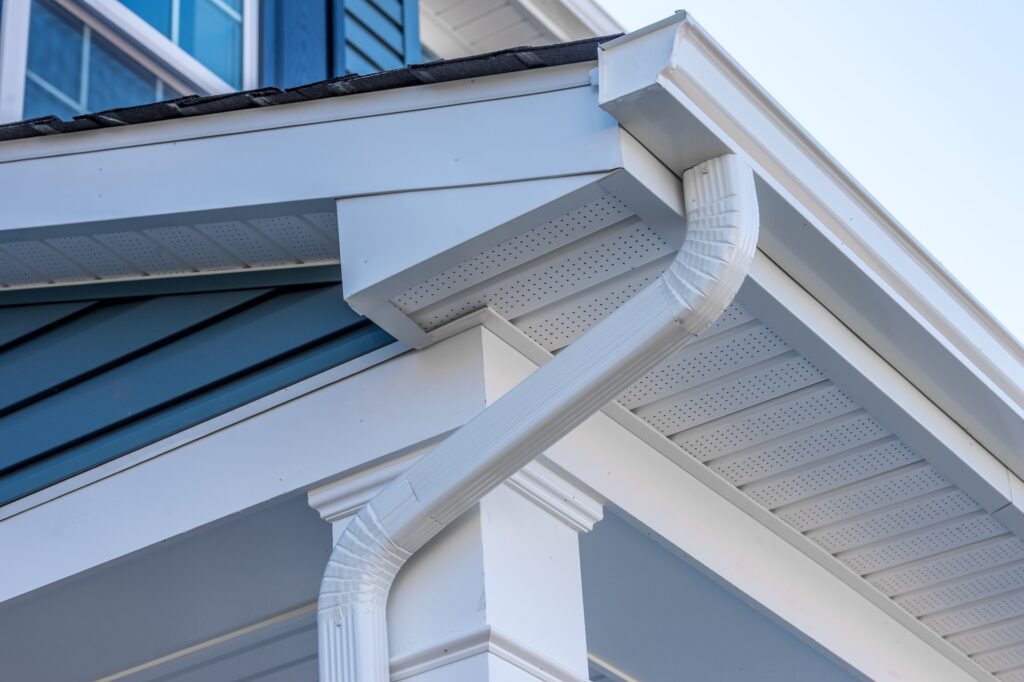
Types of Gutter Guards
Gutter guards come in a variety of types, materials, and designs, each with its own set of advantages and disadvantages. Choosing the right type often depends on factors like the type of debris common in your area, the pitch of your roof, your budget, and the aesthetics you prefer.
Mesh Gutter Guards
Mesh guards typically consist of a fine mesh screen, often made of metal (like aluminum or stainless steel) or sometimes durable plastic, stretched over a frame. The mesh has small openings that allow water to pass through but block most solid debris.
- Pros: Effective at blocking small debris like shingle granules and pine needles; durable materials available; relatively discreet appearance.
- Cons: Can still clog on top of the mesh with very fine debris or seed pods; require occasional brushing or cleaning of the mesh surface.
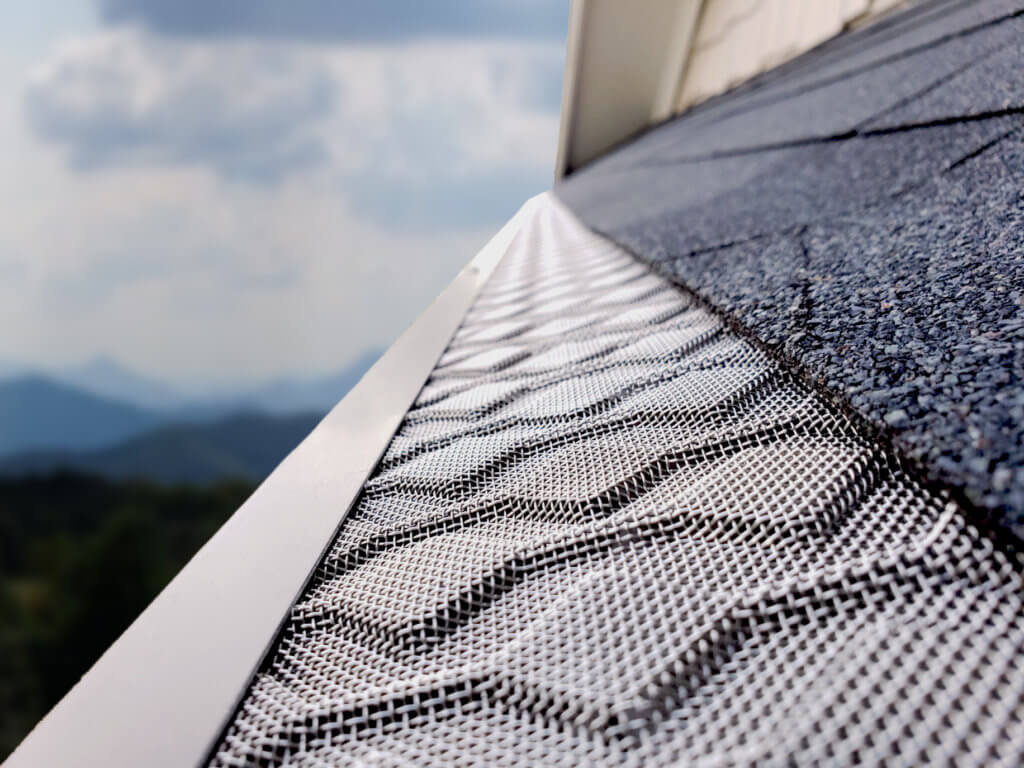
Surface Tension (Reverse Curve) Gutter Guards
These guards use the principle of surface tension. The guard extends over the gutter and curves downward. Water follows the curve and flows into a slot in the gutter, while debris falls off the curved edge.
- Pros: Generally effective at shedding larger debris like leaves and twigs; no holes or screens to clog in the traditional sense.
- Cons: Can struggle with heavy rainfall (water may overshoot the slot); not as effective with pine needles or small debris that can get stuck in the slot; may be visible from the ground, altering the roofline appearance.
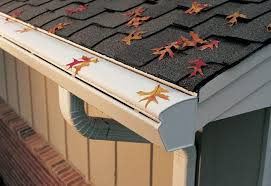
Screen Gutter Guards
Screen guards are simpler and typically the most budget-friendly option. They are often made of plastic or metal and have larger holes than mesh guards. They usually snap or slide into place over the gutter.
- Pros: Inexpensive; easy to install (often DIY-friendly); good at blocking large leaves and twigs.
- Cons: Less effective against smaller debris like pine needles, seeds, and shingle grit, which can pass through the larger holes and still cause clogs; can be prone to warping or dislodging.
Brush Gutter Guards
These are essentially large, cylindrical brushes inserted into the gutter channel. The bristles fill the gutter, preventing debris from settling at the bottom while allowing water to flow through the bristles.
- Pros: Easy to install and remove; simple design.
- Cons: Debris can get caught and tangled in the bristles, making them difficult to clean; not ideal for areas with heavy fine debris; water flow can be restricted if the brush becomes heavily saturated with debris.
Foam Gutter Guards
Foam guards are wedges of porous foam that fit snugly into the gutter channel. Water passes through the foam, while debris stays on top.
- Pros: Easy to install; relatively inexpensive; invisible from the ground.
- Cons: Foam can degrade over time from UV exposure and weather; prone to clogging with small debris and seeds embedded in the foam; can become saturated and potentially freeze or support plant growth within the foam itself.
Key Benefits of Installing Gutter Guards
Installing a quality gutter guard system provides numerous advantages for homeowners, significantly reducing maintenance, preventing costly damage, and enhancing safety.
Reduced Gutter Cleaning Frequency
This is perhaps the most immediate and appreciated benefit. While no gutter guard system is entirely maintenance-free, they drastically reduce how often you need to clean your gutters. Instead of multiple cleanings per year, you might only need to clear occasional debris from the top of the guards or perform a quick check once or twice a year.
Less frequent cleaning means saving significant time and effort. For many, it also means saving money on hiring professional gutter cleaners. The reduction in this chore alone makes gutter guards a worthwhile investment for many homeowners.
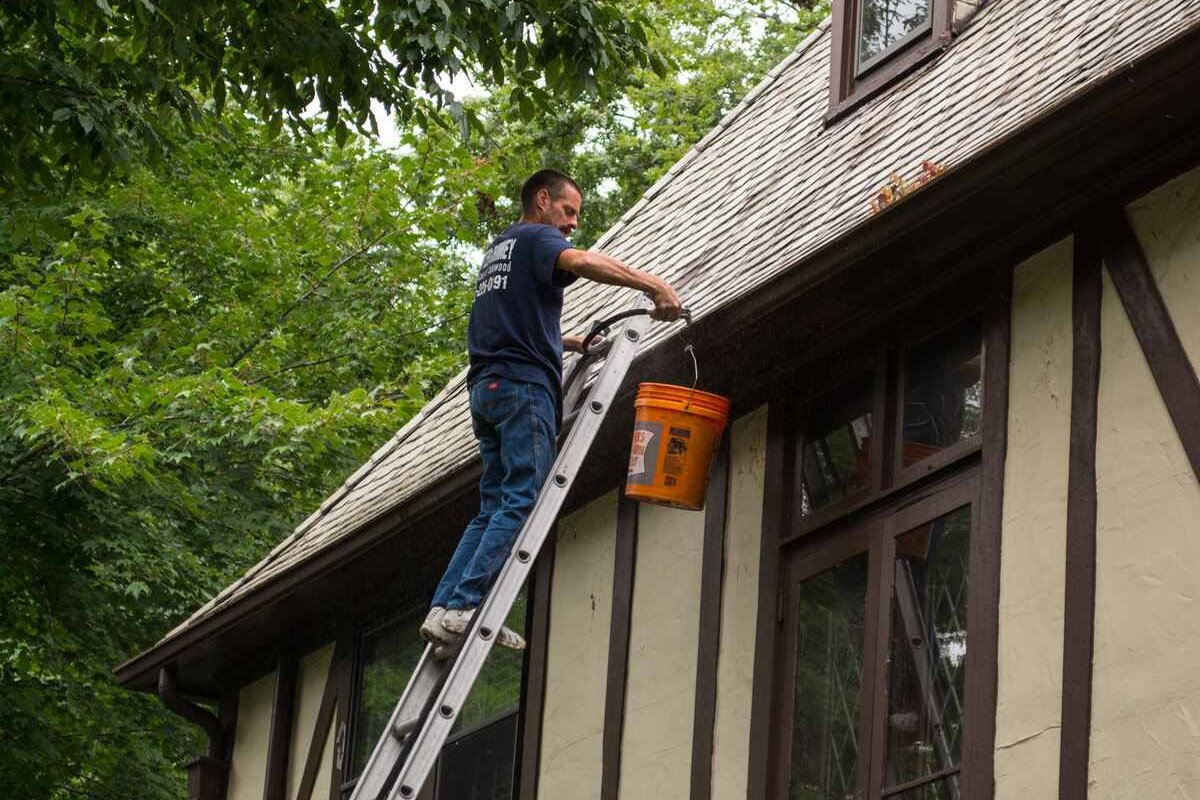
Prevention of Clogs
The primary function of gutter guards is to keep debris out, thereby preventing clogs. An open gutter is essentially a trough designed to catch water, but it's equally effective at catching everything that falls from the trees or washes off the roof. Gutter guards act as a barrier, ensuring that leaves, seeds, shingle granules, and other potential blockages don't accumulate in the gutter channel or downspouts.
Preventing clogs is critical for maintaining the proper function of your drainage system. When water can flow freely through the gutters and downspouts, it is effectively directed away from your home's foundation and walls, as intended.
Protection Against Water Damage
Clogged gutters are a leading cause of water damage to a home's structure. By preventing clogs, gutter guards directly mitigate this risk.
- Fascia and Soffit Protection: Overflowing water saturates fascia boards and soffits, leading to rot and decay. Gutter guards keep water flowing within the gutter, protecting these vulnerable wooden components from constant moisture exposure. This preserves the structural integrity of your eaves and prevents costly repairs or replacements.
- Foundation and Basement Protection: When water overflows and pools around the foundation, it increases hydrostatic pressure. Over time, this pressure can cause cracks in the foundation walls, leading to leaks in basements or crawl spaces. By ensuring water is directed away through downspouts, gutter guards protect your foundation from water intrusion and the associated risks of structural damage and mold growth.
- Landscaping Preservation: Uncontrolled water runoff can erode soil, damage plants, and ruin landscaping features near the house. Functional, clog-free gutters ensure water is channeled safely away, protecting your garden and yard.
- Siding and Window Protection: Overflowing water can also stream down the sides of your house, potentially seeping behind siding or around window frames. This can cause damage to the siding material, lead to wood rot around windows, and even interior water damage. Gutter guards help keep water contained within the gutter channel, safeguarding your home's exterior cladding and windows.
Prevention of Ice Dams
In climates that experience freezing temperatures, such as parts of Oregon, clogged gutters significantly increase the risk of ice dam formation. Debris in the gutter prevents melted snow from draining, causing it to back up and freeze along the eaves. This ice dam can then trap more melted snow, forcing water under the shingles and into the attic or walls, causing severe water damage to insulation, drywall, and paint.
Gutter guards help prevent ice dams by keeping the gutters clear. Even if snow melts on the roof, the water can reach the gutter and drain freely through the downspouts instead of being blocked by debris and freezing. This reduces the conditions necessary for ice dams to form, protecting your roof structure and interior from winter water damage.
Enhanced Safety
Cleaning gutters requires working at heights on a ladder, which is inherently risky. Falls from ladders are a common cause of household injuries, some of which can be severe. By dramatically reducing the need for manual gutter cleaning, gutter guards significantly improve homeowner safety. For those who previously hired professionals, it reduces that recurring expense.
Pest Deterrence
Clogged gutters filled with damp leaves and stagnant water create an attractive habitat for various pests, including mosquitoes (which breed in standing water), rodents, birds, and insects like termites and carpenter ants, which are drawn to damp or rotting wood. By keeping gutters clear and dry, gutter guards make them less hospitable to these unwelcome visitors, helping to deter pest infestations near your home.
Increased Gutter and Roof Longevity
When gutters are constantly full of heavy, wet debris, they can sag, pull away from the fascia, or even collapse. The stagnant water and decaying organic matter can also accelerate the corrosion of metal gutters or the breakdown of other materials. By keeping gutters clear and free-flowing, guards reduce this stress and exposure, potentially extending the lifespan of your gutter system. Similarly, by preventing water backup and ice dams, they protect the lower edges of your roof decking and shingles, contributing to the overall longevity of your roof.
Considerations Before Installing Gutter Guards
While the benefits are clear, there are a few things to consider before installing gutter guards:
- Cost: The cost varies significantly depending on the type of guard, the material, the complexity of your roofline, and whether you choose professional installation.
- Roof Type and Pitch: Some gutter guard types are better suited for certain roof materials or pitches than others. A very steep roof sheds debris more effectively, which can influence the best guard choice.
- Type of Debris: Consider the specific types of debris you deal with most (large leaves, small pine needles, seeds, shingle grit) to choose a guard type that is most effective against those materials.
- Maintenance Expectations: No system is entirely maintenance-free. You may still need to occasionally clear debris from the top of the guard or check for blockages at downspout exits. Understand the maintenance requirements of the system you choose.
- Warranty: Look for products and installations that come with a warranty.
Planning for a home improvement project like installing gutter guards involves understanding the scope and potential costs.
If you're considering adding gutter guards and want to get an idea of potential costs for related roofline work or understand how this fits into your overall home maintenance budget, SkyQuote offers a convenient tool.
Get your free instant roof estimate](/Instant-Estimate)
Maintenance Even With Gutter Guards
It's a common misconception that installing gutter guards eliminates all maintenance. While they drastically reduce the frequency and difficulty of cleaning, some maintenance is still necessary to ensure optimal performance.
- Surface Clearing: Some debris, particularly smaller seeds, shingle granules, or "tree spinners," can land and accumulate on top of the guard surface. This debris may need to be brushed or blown off periodically to prevent it from decomposing on the guard or potentially blocking the small openings.
- Downspout Check: Even with guards, it's wise to occasionally check the downspout exits to ensure they haven't become blocked by any fine material that made it through or debris that bypassed the guards.
- Guard Inspection: Periodically inspect the guards themselves to ensure they are still securely attached, haven't warped or been damaged (e.g., by falling branches or ice), and are effectively shedding debris.
The level of residual maintenance depends heavily on the type of guard installed and the amount and type of debris your property experiences. However, this minimal maintenance is far less frequent and safer than cleaning clogged, open gutters.
Choosing the Right Gutter Guard System
Selecting the best gutter guard system for your home in an area like Warren, Oregon, requires careful consideration of the local environment. The abundance of trees means significant leaf drop, but also potentially pine needles and other small debris. Rainfall is frequent, making effective water flow paramount.
Consider the dominant type of debris on your property. If large leaves are the main issue, surface tension or certain screen guards might work well. If pine needles and shingle grit are prevalent, a fine mesh system is likely more effective. If you experience heavy, concentrated rainfall, ensure the guard system can handle the volume without overshooting.
Durability is also key. Choose materials that can withstand the local climate, including rain, wind, and potential ice or snow accumulation. Metal guards (aluminum, steel, copper) tend to be more durable than plastic or foam options.
Aesthetic preference also plays a role. Some guards are more visible from the ground than others. Decide if the appearance is a significant factor for you.
Ultimately, the "best" guard is the one that most effectively manages the specific debris and water flow characteristics of your home and climate, fits your budget, and meets your maintenance expectations.
Why Professional Gutter Guard Installation Matters
While some gutter guard types are marketed as DIY-friendly, professional installation offers several key advantages.
- Expertise: Professionals understand roof and gutter systems. They can recommend the most suitable guard type for your specific roof pitch, gutter size, and the type of debris common in your area.
- Proper Installation: Correct installation is crucial for performance. Guards need to be securely attached without damaging the roof, shingles, or existing gutters. Improper installation can lead to gaps where debris can enter, or even cause water to back up onto the roof or behind the fascia.
- Safety: As mentioned, working on ladders at heights is dangerous. Professionals have the right equipment and training to perform the installation safely.
- Warranty: Professional installers often provide warranties on their workmanship, in addition to the product warranty, giving you peace of mind.
For homeowners looking to have gutter guards professionally installed without the hassle of finding and vetting contractors themselves, a service that connects you directly with qualified local professionals can be incredibly helpful.
When you're ready to enhance your home's protection with professionally installed gutter guards, finding a reliable contractor is the next step.
Book a roofing appointment](/book-a-appointment)
SkyQuote simplifies this by connecting you with pre-vetted roofers who can handle gutter guard installation and related roofline services.
Cost Factors for Gutter Guard Installation
The cost of installing gutter guards is influenced by several factors:
- Type of Gutter Guard: Simple screens are the least expensive, while high-quality mesh or surface tension systems are typically more costly per linear foot.
- Material: Plastic is cheapest, followed by aluminum, steel, and then copper, which is the most expensive.
- Linear Footage: The total length of your gutters needing coverage is a primary cost driver.
- Roof Height and Pitch: Taller homes or steeper roofs are more challenging and dangerous to work on, increasing labor costs.
- Complexity of the Roofline: Homes with multiple angles, dormers, or other features require more custom fitting and labor.
- Condition of Existing Gutters: If gutters need repair or replacement before guards can be installed, this adds to the total cost.
- Professional vs. DIY Installation: Professional installation includes labor costs but ensures proper fitting and often comes with warranties.
While there is an upfront cost, consider it an investment that pays off over time by preventing expensive water damage repairs and reducing ongoing maintenance costs and risks.
Frequently Asked Questions About Gutter Guards
Do gutter guards work on all types of roofs?
Most gutter guard systems can be installed on various roof types, including asphalt shingle, metal, tile, and wood shake roofs. However, the specific installation method may vary, and some guard types might be more effective depending on how the roof sheds debris. It's best to consult with a professional to ensure compatibility and proper installation.
Can gutter guards cause ice dams?
Properly installed gutter guards, especially those designed to shed debris effectively, are intended to prevent ice dams by keeping gutters clear so melted snow can drain. However, poorly designed or clogged guards can potentially contribute to ice dam formation by blocking water flow. Choosing a high-quality system and ensuring proper installation is key.
Will I ever need to clean my gutters again after installing guards?
While the need for frequent cleaning is significantly reduced, no system is truly "maintenance-free." You may still need to occasionally clear debris from the top of the guards, check downspouts, or perform periodic inspections. The goal is to make maintenance minimal and much safer.
How long do gutter guards last?
The lifespan of gutter guards depends on the material and quality. Plastic guards may need replacement within a few years due to UV degradation. Metal guards, especially aluminum and steel, can last 20-30 years or more. Higher-end systems often come with longer warranties.
Can small debris like shingle granules get through gutter guards?
It depends on the type of guard. Screen guards with larger holes may let shingle granules through. Fine mesh guards are designed to block even small debris like granules and pine needles, although these can sometimes accumulate on top of the mesh.
Protecting Your Warren, Oregon Home
For homeowners in Warren, Oregon, where trees are abundant and rainfall is common, protecting your home from the risks of clogged gutters is a wise decision. Installing gutter guards is a proactive step that saves you time, reduces safety risks, and prevents potentially extensive and costly water damage to your roof, fascia, foundation, and landscaping. By understanding the different types of guards and their benefits, you can choose a system that provides the best protection for your property.
Investing in quality gutter protection means less time on a ladder and more confidence that your home is safeguarded against the elements, even during heavy rains and through changing seasons. It's an upgrade that contributes significantly to the long-term health and value of your home.
